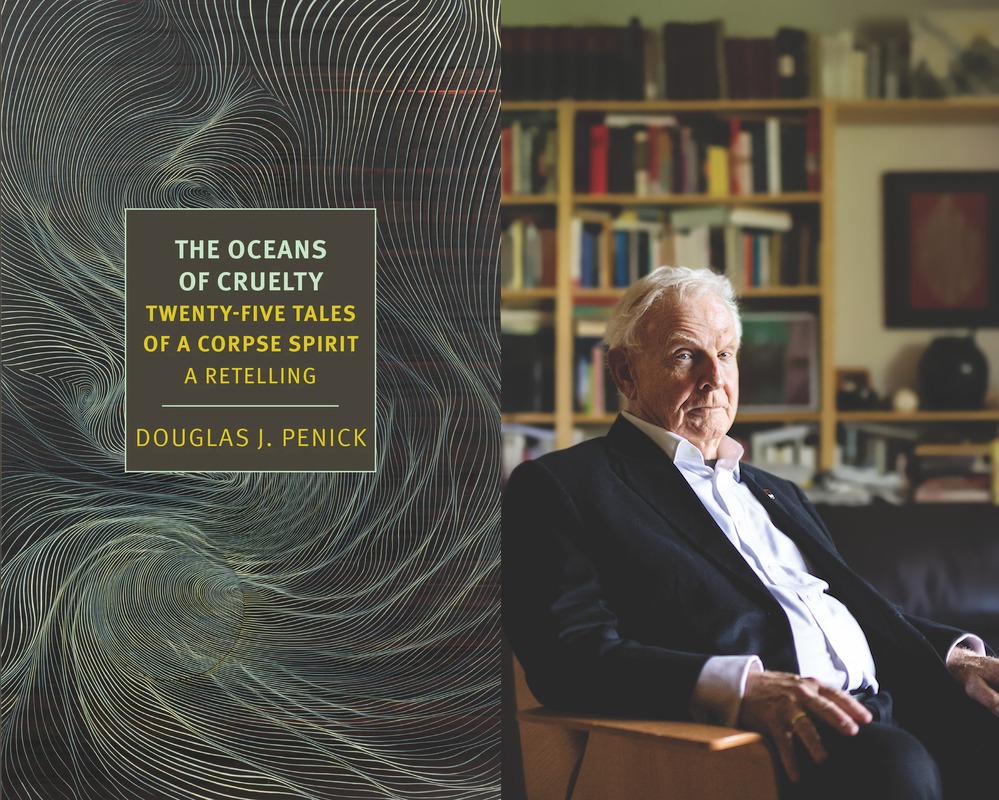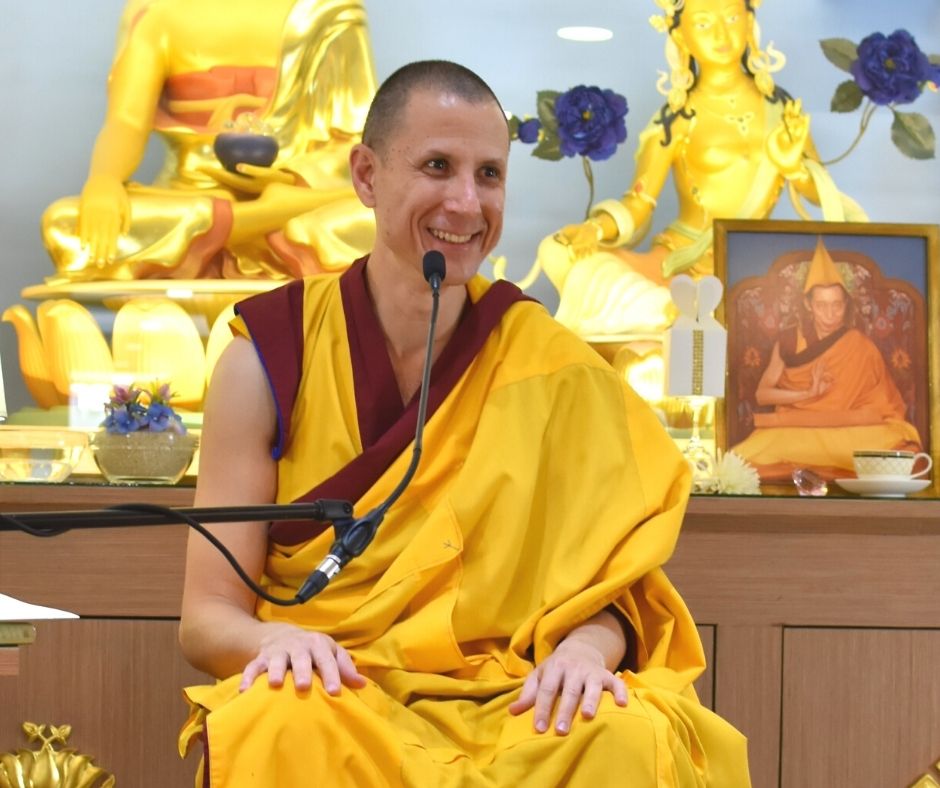An Unending Net of Stories: Inside the New Book ‘The Oceans of Cruelty’
A retelling of one of the world’s oldest collections hurls us into layered and irresistible narratives, reminding us of the enduring power of storytelling and universal quest for freedom. The post An Unending Net of Stories: Inside the New...

On October 30, at 2 p.m. ET, Douglas Penick will discuss his new book, The Oceans of Cruelty, with Tricycle’s editor-in-chief, James Shaheen. Learn more about the book, a thrilling re-creation of an 11th-century Sanskrit collection, below and join us for the virtual discussion. Register here.
The version of the ancient Twenty-Five Tales of a Corpse Spirit, or the Vetala tales, which I’ve retold in The Oceans of Cruelty (The New York Review of Books, October 2024), is from John Platts and Duncan Forbes’s 19th-century version from the old Hindi. This, in turn, is a translation from Śivadasa’s Sanskrit. It came from much earlier collections now lost. These stories have always been very much alive in India; they migrated to Tibet, where they changed and became part of the existing spoken culture. But they changed dramatically in Tibet, Mongolia, and Buryatia, where they evolved to become vehicles for Buddhist teachings. (They made a great impression on Chögyam Trungpa Rinpoche, among others.) And as they made it to the West, particularly in German Indologist Heinrich Zimmer’s interpretation, The King and the Corpse, and German writer Thomas Mann’s novella, The Transposed Heads, they became vehicles for psychological explorations in the Western style.
The stories changed a lot in that migration. Most obviously, the great Buddhist teacher Nagarjuna sent a khan, or king, to retrieve the vetala, or corpse spirit, so that the king might be purified of the evil karma resulting from his evil deeds. And many of the tales within this frame are very different too. They’ve certainly been transposed to a different terrain and take place in more nomadic social structures. They have shaped and have been shaped by the innumerable cultures through which they’ve passed.
We are all always completely enmeshed in an unending net of stories. These extend from the most distant past, the creation, or the big bang, to now. They shape the future too. We find our identity and the identity of our world, our sense of meaning and purpose, in the many narratives we’ve received. The history of the Buddha; the tales of Abraham, Isaac, Mohammed, Confucius, and Lao-tzu; the passion of Christ; and the history of science live in us whether we’re believers or not. Narratives shape the ways in which we seek to understand ourselves, develop ourselves, and free ourselves. This is true even if we try to free ourselves from stories altogether.
The Oceans of Cruelty contains both aspects: the struggles to find a way to be free inside a given tale, and a larger struggle, the frame story, which presents the longer fight to be free from imprisonment in stories altogether. The beginning and the end, this is the shape of narrative, and just as we therefore can look to the end, narratives take us back to the beginning. For instance, this is how The Oceans of Cruelty starts:
As has been told:
Primordial space, the undivided, the signless, where sentience and non-sentience, awareness and unawareness have not divided, where there is neither life nor death, nor time nor stasis, continuity or discontinuity, void or phenomena. Primordial Sea undivided, Primordial Sky undivided, Primordial Darkness undivided, Primordial Light undivided. Chaos moving and alive without reference to order or disorder. Neither noun nor verb. Continuity continuing in its own reference. A vast and empty luminous expanse.
Sounds, words emerge, undivided from the original sea, never separated nor born. Phenomena rippling on the surface of the sea. Rippling as great forces, gods, cycles of time wherein worlds and universes are born, evolve, decay, die, and dissolve. Whispers pass by, not remembered nor forgotten.
As has been told:
Amongst whispered ripples of the Primordial Sea, ripples flowing one into another, chasing, following, continuing, the whisperings ebbing, from this momentary surface. These continuing now and now and now, merging, and dissolving and re-emerging as form, as Śiva, as Śiva, enfolding, whispering to Pārvatī, as Pārvatī listening, enfolded. Mount Kailash rising, wave-crest moving slowly, at the highest point, the border of solidity, where, amid ceaseless winds, it touches an ever-changing sky, Śiva whispers to the mother of the universe, to Pārvatī, whispers idly, and his whisperings tell fragments of worlds that will come to be, that will seem. Extending long pale arms, Śiva reaches down into the chaos of the lightless sea, draws up his hands and shimmering droplets fall, whispering of moments, stories unconstrained by meanings, shaped from chaos by falling, whispering, caressing as they circle in the whorls of Pārvāti’s inner ear. She sighs, exhales in deeper languor, smiles slightly. They are entwined; they merge and emerge; as he speaks, elements of a broken history of the world appear. (Reprinted with permission from The New York Review of Books.)
And what happens next? Well, in this version of the cycle of the Vetala tales, as Shiva whispers these so seductive stories, a human lover in bed with his wife happens to overhear them. He cannot resist telling them to his wife. Shiva realizes his amorous murmuring has entered the human realm as common entertainment. He curses the human lover with a terrible curse.
This leads to another story of a king and his successors, and then to a tale about three beings, a corpse spirit, a king, King Vikramaditya, and an evil yogi, all fated to come together. Encompassed in these are other stories, the “24 Tales of a Vetala.” Some are fragmentary, some quite complicated, many have repeated and overlapping themes; they take place in throne rooms, charnel grounds, jungles, gardens, shrine rooms, and underground caverns. Stories are nested within stories, one set of circumstances is explained by another, in dramas of sudden overwhelming love, terrible grief, of yogis entering new bodies and bringing the dead to life, of faithful guardians and ministers, women with too many fiancés, cruel, murderous husbands, honest thieves, of ritual suicides, of sacrifice, of the power of the Great Goddess to destroy and restore life. Each story contains other stories, so all of these tales are contained within other, nested, narrative frames, extending out from the beginning of time.
As this cycle unfolds, at the end of every story, King Vikramaditya must answer a question that the vetala poses about the tale. This, as if these narratives were riddles or puzzles about some larger reality. He answers, and then the cycle continues with another story and keeps going until the king cannot think of a reply. Then, the underlying reality of the situation becomes clear. The king and the vetala can free themselves from these hallucinatory repetitions.
But we, readers and listeners all, well, we are not free, nor do we, in our heart of hearts, wish to free ourselves from the stories we read and hear. For us, when one ends, another must begin. This is the core seduction of samsara. So be it.

 UsenB
UsenB 






























